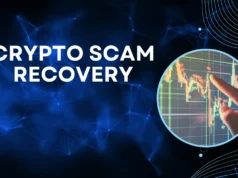UBA Finance Crypto
Universal Basic Asset (UBA): This could refer to the concept mentioned earlier, where essential assets or resources are provided universally to all citizens or residents. It could involve distributing ownership or access to fundamental assets like housing, education, healthcare, or other essential resources.
Finance: This likely refers to the financial aspect of the concept. It could involve managing, distributing, or valuing these universal basic assets.
Crypto: This suggests that blockchain technology or cryptocurrencies might be involved in implementing this concept. Blockchain could provide transparency, security, and efficiency in managing and distributing these universal basic assets.
Combining these components, “Universal Basic Asset Finance Crypto” might refer to a hypothetical system that utilizes blockchain technology and cryptocurrencies to facilitate the distribution, management, and valuation of universal basic assets. This could be a novel approach to implementing a universal basic income or asset ownership program.
Features of UBA Finance Crypto
While the concept of “Universal Basic Asset Finance Crypto” may be speculative, Cryptoarenanews can outline some potential features such a system could incorporate. Remember that these features are hypothetical and need to be carefully designed and evaluated for practical implementation.
Here Are Some Possible Features:
Tokenized Assets:
Essential assets, such as housing, education vouchers, healthcare benefits, or even basic income, could be tokenized on a blockchain. Each individual could have a unique digital token representing their ownership or entitlement to these assets.
Smart Contracts:
Smart contracts could automate the distribution of assets and benefits based on predefined criteria. For example, when certain conditions are met (such as regular intervals or specific life events), the smart contract could trigger the issuance of tokens or assets to eligible individuals.
Decentralized Identity:
A decentralized identity system could be integrated, ensuring that individuals’ identities are secure, verifiable, and private. This would be crucial for preventing fraud and protecting sensitive personal information.
Universal Access:
The system could be designed to be accessible to all citizens or residents, ensuring that no one is excluded from participating due to barriers or limitations.
User-Friendly Interfaces:
User-friendly interfaces and mobile apps allow individuals to easily manage and monitor their assets, track transactions, and interact with the system.
Asset Exchange:
A secondary market could emerge where individuals could trade or exchange their tokenized assets with others, providing flexibility and choice in how they utilize their universal basic assets.
Anonymity and Privacy:
The system could be designed to protect user privacy while ensuring transaction legitimacy. Zero-knowledge proofs or similar cryptographic techniques could be employed.
Distributed Governance:
A decentralized governance model could enable community participation in decision-making related to the system’s operation, rules, and any changes or upgrades.
Interoperability:
The system could be designed to interact with existing financial systems and infrastructure, allowing for seamless integration with other services.
Education and Outreach:
An educational component could help individuals understand how to manage their digital assets, make informed decisions, and utilize the benefits effectively.
Scalability and Efficiency:
The underlying blockchain technology should be scalable to handle many transactions and participants efficiently to ensure the system’s smooth operation.
Disaster Recovery and Security:
Robust security measures and contingency plans should be in place to protect against data breaches, cyberattacks, and system failures.
Regulatory Compliance:
The system should be designed to comply with relevant regulations and legal frameworks to ensure its legitimacy and long-term sustainability.
Stakeholder Collaboration:
Collaboration with governments, financial institutions, and other stakeholders would be necessary to ensure a cohesive and successful implementation.

Benefits For UBA Finance Crypto
The concept is a bit speculative; the concept “UBA Fintech Crypto” may be speculative or fictitious; Cryptoarenanews can outline some potential benefits such a system could offer if it existed. These benefits depend on how the system is designed and implemented.
Here Are Some Possible Advantages:
Financial Inclusion:
Utilizing crypto and blockchain technology could extend financial services to underserved populations lacking access to traditional banking systems. This could help bridge the gap between those excluded from the formal economy and essential financial services.
Transparency:
Blockchain’s transparent and immutable nature could enhance accountability and reduce corruption in distributing and managing universal basic assets. All transactions and asset ownership or distribution changes could be recorded on the blockchain, ensuring transparency.
Efficiency:
Automation through smart contracts could streamline the distribution process, reducing administrative overhead and ensuring that assets are distributed to eligible recipients efficiently and without delay.
Ownership and Empowerment:
Providing individuals with ownership of essential assets through a crypto-based system could empower them by giving them a stake in their economic well-being. This could lead to increased economic stability and resilience.
Reduced Intermediaries:
By leveraging blockchain technology, the need for intermediaries, such as banks or other financial institutions, could be minimized, potentially reducing costs associated with distribution and management.
Global Accessibility:
Cryptocurrencies and blockchain systems have the potential to be accessible globally, allowing for the implementation of a universal basic asset program across borders and benefiting a more comprehensive range of people.
Decentralization:
A crypto-based system could promote decentralization of control and decision-making, giving individuals more agency over their financial and economic circumstances.
Innovation:
Integrating blockchain and cryptocurrency technology could spur innovation in how universal basic assets are managed, tracked, and utilized, potentially leading to new ways of optimizing resource allocation.
Data Security:
Blockchain’s secure and tamper-resistant nature could enhance data security and protect sensitive personal information, which is particularly important in welfare and social assistance programs.
Economic Stability:
By providing basic economic security to all citizens, a universal basic asset program could contribute to economic stability and reduce poverty, potentially leading to a more equitable and resilient society.

FAQs
1. What is Universal Basic Asset Finance Crypto (UBA Finance Crypto)?
UBA Finance Crypto is a speculative concept that envisions a system where essential assets or benefits, such as housing, education, or basic income, are tokenized and distributed using blockchain technology and cryptocurrencies. This system aims to provide universal access to critical resources while leveraging the transparency and efficiency of the blockchain.
2. How Does UBA Finance Crypto Work?
UBA Finance Crypto would involve tokenizing essential assets on a blockchain. Individuals would have unique digital tokens representing their ownership or entitlement to these assets. Smart contracts would automate the distribution process based on predefined criteria, ensuring eligible individuals receive their benefits seamlessly.
3. What Are The Benefits Of UBA Finance Crypto?
UBA Finance Crypto could offer benefits such as increased financial inclusion, transparency, efficiency in distribution, ownership empowerment, reduced intermediaries, and potential global accessibility. It could promote economic stability and innovation while leveraging the security of blockchain technology.
4. How Do I Access My Universal Basic Assets In UBA Finance Crypto?
Individuals would likely have a digital wallet associated with their identity. This wallet would hold their tokenized assets. User-friendly interfaces and mobile apps allow individuals to manage, monitor, and utilize their assets, such as trading or exchanging them.
5. Is My Personal Information Safe In UBA Finance Crypto?
UBA Finance Crypto could incorporate advanced cryptographic techniques, like decentralized identity and zero-knowledge proofs, to protect user privacy while ensuring the legitimacy of transactions. The system would prioritize data security and anonymity.
6. Can I Exchange Or Sell My Tokenized Assets?
A secondary market might emerge where individuals could trade or exchange their tokenized assets with others. This could provide flexibility and choice in using your universal basic assets.
7. How is UBA Finance Crypto Governed?
UBA Finance Crypto might employ a decentralized governance model, allowing community participation in decision-making related to the system’s operation, rules, and upgrades. Stakeholder collaboration with governments and other entities also plays a role in governance.
8. Is UBA Finance Crypto Compatible With Existing Financial Systems?
The system could be designed for interoperability, enabling it to interact with existing financial infrastructure. This would ensure a smooth integration of UBA Finance Crypto with other financial services.
9. How Can Governments And Institutions Ensure The Legitimacy Of UBA Finance Crypto?
Regulatory compliance would be a key consideration. The system’s design must adhere to relevant regulations and legal frameworks to ensure its legitimacy and sustainability.
10. When Can We Expect UBA Finance Crypto To Become A Reality?
UBA Finance Crypto is a speculative concept, and its implementation would depend on technological advancements, societal acceptance, and stakeholder collaboration. There’s yet to be a definite timeline for its realization.
















